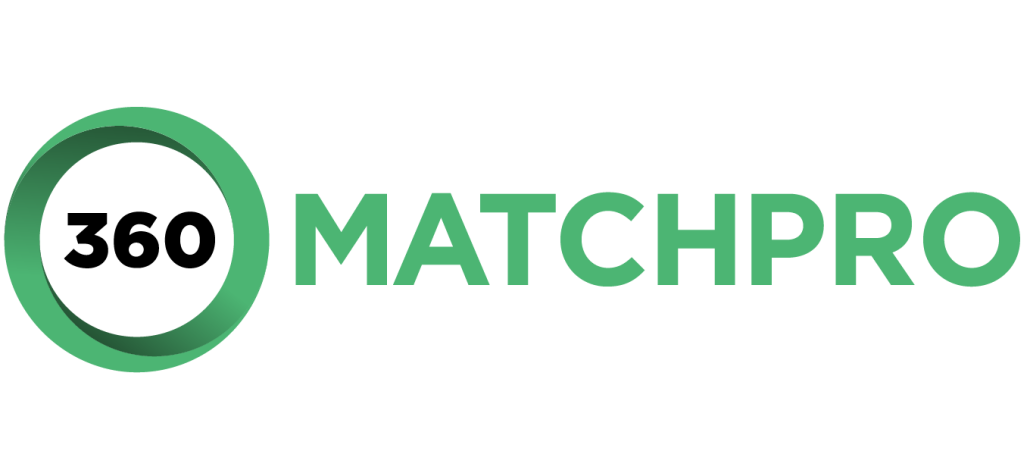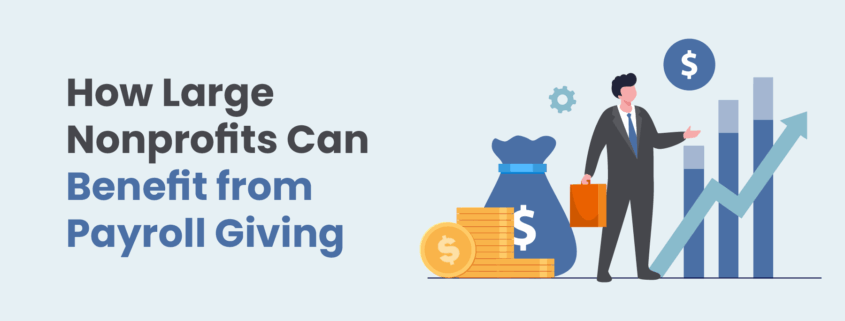How Large Nonprofits Can Benefit from Payroll Giving
Payroll giving is an innovative fundraising strategy that enables employees to contribute a portion of their salary to charitable organizations through automatic deductions. For large nonprofits in particular, this approach offers a reliable and scalable way to secure consistent funding while building stronger relationships with employees, corporate partners, and donors.
- What is Payroll Giving?
- Benefits of Payroll Giving for Large Nonprofits
- Maximizing the Impact of Payroll Giving Donations
As large organizations seek to ensure financial stability and long-term sustainability, payroll giving can provide the foundation for predictable revenue streams, enhance employee engagement, and increase visibility within the corporate sector. And this guide will tell you everything you need to know!
What is Payroll Giving?
Payroll giving is a simple and effective way for employees to donate to charitable organizations directly from their paychecks. With this method, employees can choose to have a predetermined amount automatically deducted from their salary, which is then donated to a nonprofit organization of their choice. This process is typically managed through the employer’s payroll system, making it an easy, consistent, and hassle-free way for employees to contribute to causes they care about.
Unlike one-time donations, payroll giving allows employees to make regular, smaller contributions over time, which can add up to a significant impact. This approach is beneficial for both employees, who can give effortlessly without having to remember to make donations, and for nonprofits, who can rely on a steady stream of contributions. Payroll giving is often offered alongside other workplace giving programs, such as matching gift programs, which can double the value of the donations. For large nonprofits, payroll giving is an invaluable tool for cultivating long-term donor engagement while ensuring a reliable source of funding.
Benefits of Payroll Giving for Large Nonprofits
Payroll giving offers numerous advantages, particularly for large nonprofits. It provides a reliable and scalable way to engage employees and cultivate a more consistent, predictable flow of donations. Here’s how payroll giving can benefit large organizations:
1. Steady and Predictable Revenue Stream
For large nonprofits, securing consistent and predictable funding is key to maintaining operations and advancing their mission. Payroll giving creates a steady revenue stream, as employees contribute through automatic payroll deductions. Unlike one-time donations, these recurring gifts allow large organizations to better plan and budget, knowing they can count on regular donations. This financial stability makes it easier to allocate resources effectively and make long-term strategic decisions with confidence.
2. Increased Donor Retention
One of the key advantages of payroll giving is increased donor retention. Employees who commit to payroll giving are more likely to remain loyal donors over time. The convenience of automatic deductions makes it easier for them to give regularly, fostering long-term engagement with the nonprofit. This sustained commitment often translates into deeper relationships, with employees feeling more personally connected to the nonprofit’s mission, which can result in higher donor lifetime value.
3. Access to Corporate Matching Gifts
Payroll giving programs often work in tandem with matching gift programs offered by employers. This means that the organization can potentially double or even triple the value of donations made by employees, significantly boosting the impact of the program. For large nonprofits, this synergy can unlock additional revenue without asking employees to contribute more out of pocket. By encouraging donors to take advantage of matching gift opportunities, nonprofits can maximize the total funds raised from payroll giving programs.
4. Low Administrative Overhead
Managing payroll donations is often less resource-intensive compared to traditional fundraising campaigns. Since donations are typically processed through a third-party platform or the employer’s payroll system, the nonprofit’s administrative workload is reduced. This means less time spent on tracking donations, issuing receipts, and managing paperwork. For large organizations with significant staff or operational demands, this reduced overhead enables teams to focus on other key activities and initiatives that directly support the organization’s mission.
5. Enhanced Visibility and Outreach
Being listed as an eligible nonprofit in workplace giving programs offers exposure to new donors, especially employees who might not have otherwise discovered or supported the organization. For large nonprofits, this expanded visibility provides a unique opportunity to reach a broader audience and attract a more diverse base of support. With increased employee engagement, nonprofits can build stronger community connections, extending their reach both within the workplace and beyond.
6. Strengthened Corporate Partnerships
Payroll giving can strengthen partnerships between nonprofits and corporations, leading to additional corporate support, both financially and in other forms, such as volunteerism or sponsorships. Large nonprofits that collaborate with companies through payroll giving can foster long-term, mutually beneficial relationships. This can lead to additional fundraising opportunities, as well as employee engagement initiatives like volunteering and event participation.
7. Improved Employee Engagement and Satisfaction
By offering payroll giving programs, companies provide employees with a simple way to support causes they care about, enhancing employee satisfaction and morale. For nonprofits, this means employees who are more likely to feel personally invested in the organization’s success. The positive impact on employee engagement can also translate into higher productivity, improved workplace culture, and stronger retention rates within the company, which can be a valuable long-term partnership for the nonprofit.
Maximizing the Impact of Payroll Giving Donations
For large nonprofits looking to successfully implement payroll giving programs, it’s important to follow a few best practices to ensure engagement, ease of use, and long-term success. Consider these strategies:
1. Clear Communication of Impact
It’s crucial to demonstrate the impact of employees’ contributions. Employees are more likely to participate in payroll giving if they understand how their donations make a difference. For example, a statement such as, “Your $20 monthly contribution helps provide clean water to a family every month,” can help employees connect personally with the cause. Transparency about how funds are used encourages ongoing support and reinforces the value of their contributions.
2. Multi-Channel Promotion
Promotion across various communication channels is key to engaging potential donors. Utilize your website, email campaigns, social media, and company-wide events to raise awareness and encourage participation. Storytelling, testimonials from employees, and examples of the nonprofit’s work can further enhance the appeal of payroll giving, demonstrating how employee donations drive real change.
3. Leverage Matching Gifts
Encourage employees to take full advantage of matching gift opportunities. Clearly communicate how matching gift programs work, and provide easy-to-follow instructions on how to submit matching requests. By highlighting this additional revenue stream, nonprofits can boost contributions and maximize the impact of payroll giving, without additional financial burden on the employees.
4. Simplify the Donation Process
The key to encouraging participation is ease of enrollment. Make sure the payroll deduction process is straightforward and accessible to all supporters, with clear instructions and direct links to forms. The simpler and more seamless the process, the more likely employees will participate.
5. Thank and Steward Donors
Recognizing and appreciating payroll giving donors is essential for building lasting relationships. Send personalized thank-you notes or impact reports that show how their contributions are helping achieve your mission. Regular updates on program successes keep donors informed and invested, helping to maintain engagement over time.
6. Track and Evaluate Contributions
Implement systems to track payroll giving contributions and assess their impact on overall fundraising goals. Analyzing program participation and effectiveness allows nonprofits to make data-driven adjustments and improve program outreach, ensuring the initiative grows year over year.
7. Engage Employees in the Mission
Provide employees with opportunities to actively engage with your nonprofit’s work beyond payroll giving. This can include volunteering, attending events, or participating in campaigns. The more employees feel involved in the nonprofit’s mission, the more likely they are to continue their support through payroll giving and other avenues.
Conclusion
Payroll giving presents a unique opportunity for large nonprofits to secure a reliable funding source, build stronger relationships with donors, and enhance their overall impact. By understanding the benefits and implementing effective strategies, organizations can leverage payroll giving to create lasting change in their communities. Start exploring payroll giving options today and unlock new possibilities for your organization’s growth and success.
For more information on payroll giving and its benefits, visit Double the Donation.
Explore Double the Donation’s Payroll Giving Tools
Ready to unlock the full potential of payroll giving for your nonprofit? Explore Double the Donation’s powerful payroll giving tools to easily identify eligible supporters and boost your fundraising efforts. Our platform helps you connect with the right donors, streamline the process, and raise more through workplace giving programs. Request a demo today and see the tools in action!



